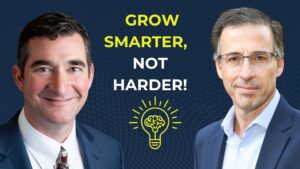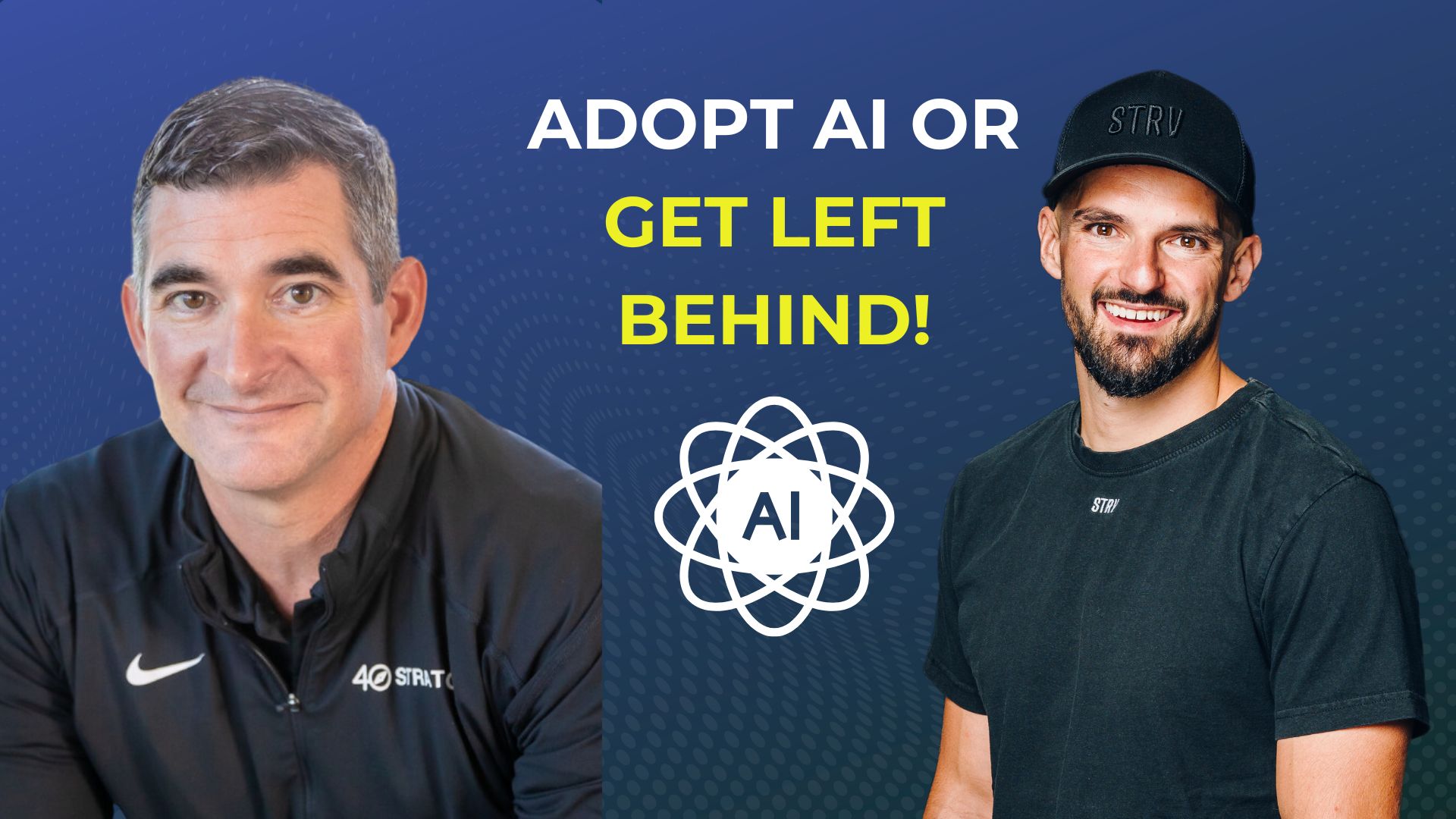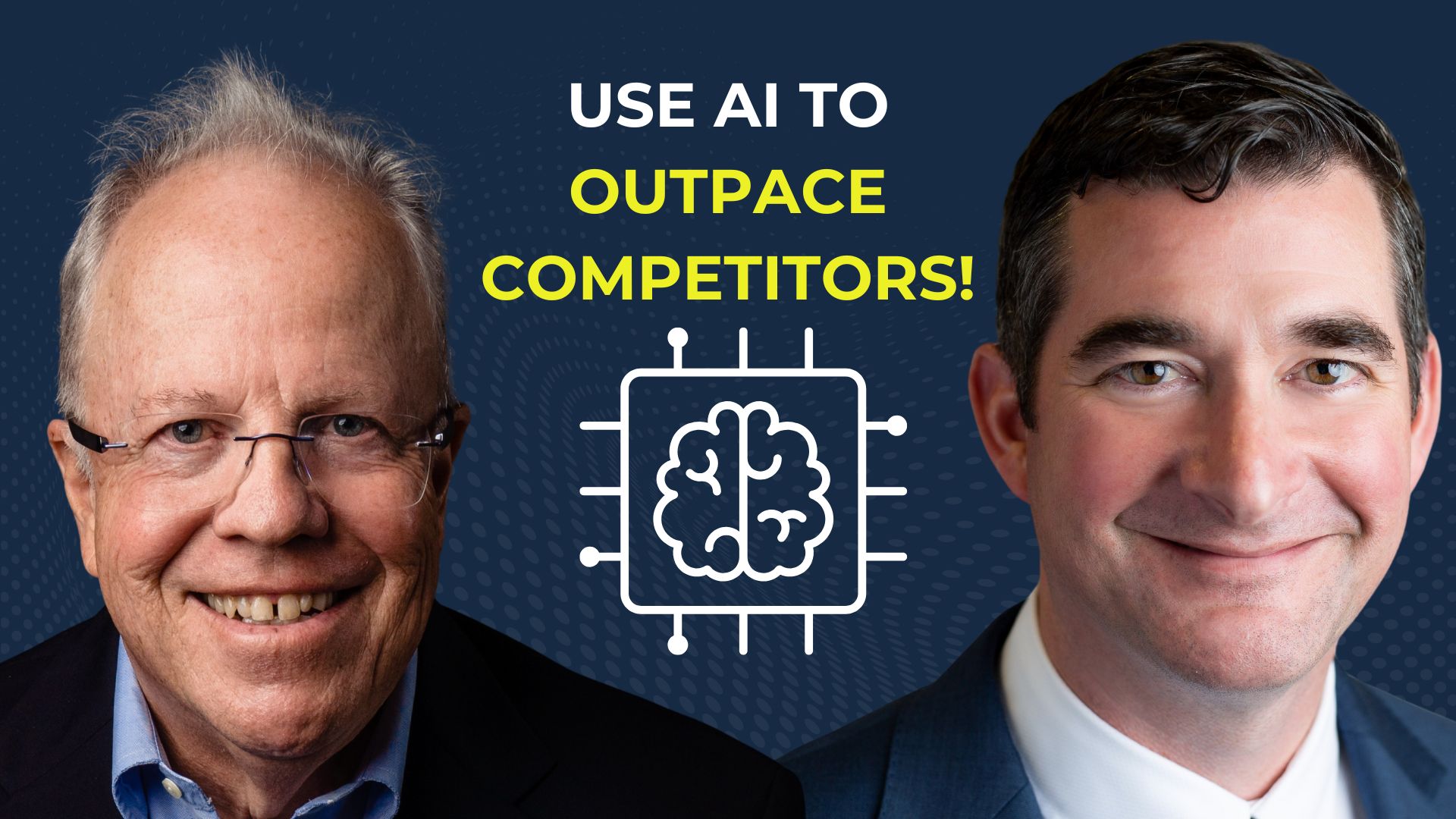How to Grow Your Business Faster Than the Market
Growing a business faster than the market is a challenging but achievable goal. In this episode of the $4M Strategies™ podcast, Carl J. Cox, CEO of 40 Strategy and 40 Accounting, talks with Matthew Pohl, CEO of the Rewild Group, about how small and mid-sized businesses can achieve sustainable growth by aligning their strategies with their current stage of development. Matthew breaks down the key components of business development—marketing, sales, and customer service—and shares practical steps to improve these systems for long-term success. Matthew is also the author of Organizational ReWilding Rules for Business Growth.
Whether you’re an entrepreneur or executive, this episode offers actionable insights to help you create a growth strategy that works for your unique business needs.
The Importance of Understanding Growth Stages
Every business goes through distinct growth stages, and each stage presents unique challenges and opportunities. Matthew highlights seven stages of business growth identified by his methodology, explaining that the rules for growth change at every stage.
Why it matters:
Recognizing which stage your business is in helps you make better decisions. Without this awareness, you risk applying strategies that worked in the past but no longer align with your current needs.
For example:
- A small business in its early stages may need to focus on lead generation to build its customer base.
- A mid-sized company may need to improve sales processes to convert leads into revenue.
- A mature business may focus on customer retention to maintain steady revenue streams.
Knowing your stage provides clarity, allowing you to focus on what matters most for growth.
What Is Business Development?
Business development is often misunderstood, especially in small and mid-sized businesses. Matthew defines it as an umbrella term encompassing three key revenue-generating functions:
- Marketing – Generating leads and building awareness.
- Sales – Converting leads into revenue.
- Customer Service – Retaining customers and ensuring repeat business.
For a business to grow sustainably, these three areas must work together seamlessly. However, many businesses struggle to optimize all three functions.
Common Challenges in Business Development
Matthew identifies several common challenges faced by small and mid-sized businesses:
- Marketing Weaknesses: Many businesses rely heavily on word-of-mouth referrals, which limits their ability to scale.
- Sales Bottlenecks: CEOs often handle sales personally, making the process overly dependent on one individual.
- Customer Service Gaps: While customer service is generally a strength, businesses sometimes overlook opportunities for upselling or increasing customer lifetime value.
These challenges create roadblocks to growth, but they can be overcome by developing robust systems.
How to Strengthen Your Business Development Structures
Focus on Marketing: Marketing is often the weakest link in small businesses, especially those that rely on referrals. To grow faster than the market, you need a steady pipeline of leads.
Tips for better marketing:
- Identify your target audience and tailor your messaging to their needs.
- Leverage digital channels like social media, email, and SEO to reach a broader audience.
- Track your marketing efforts to understand what works and refine your strategy.
Improve Sales Processes: Sales is where leads turn into revenue. A common mistake in small businesses is relying solely on the CEO or leadership team to close deals.
Tips for better sales:
- Train your sales team to handle the process independently.
- Create clear sales workflows to ensure consistency.
- Use customer relationship management (CRM) tools to track and optimize performance.
Optimize Customer Service: Customer service is crucial for retaining clients and driving repeat business. Happy customers are more likely to refer others, creating a cycle of growth.
Tips for better customer service:
- Regularly gather customer feedback to identify areas for improvement.
- Implement loyalty programs to encourage repeat purchases.
- Train your team to handle issues quickly and professionally.
Why Marketing Is the Biggest Challenge
Matthew notes that marketing tends to be the weakest area for small and mid-sized businesses. This is especially true for companies that have grown through word-of-mouth referrals.
- Word-of-mouth is not scalable.
- Without consistent lead generation, businesses struggle to sustain growth.
To address this, businesses need to invest in modern marketing techniques that reach larger audiences.
Aligning Growth Strategies with Your Stage
The foundation of Matthew’s approach is aligning your growth strategies with your current stage of business development.
- Assess your current strengths and weaknesses in marketing, sales, and customer service.
- Prioritize improvements based on what will have the biggest impact on growth.
- Create systems that are not overly reliant on the CEO or leadership team.
Building Sustainable Growth
Sustainable growth isn’t just about short-term wins—it’s about creating systems that work for years to come. Matthew emphasizes the importance of developing processes that allow your business to thrive even when the leadership team isn’t directly involved.
Key Takeaways
- Understanding your stage of growth is essential for choosing the right strategies.
- Strengthening marketing, sales, and customer service systems creates a foundation for growth.
- Focus on sustainability by building systems that are not overly reliant on leadership.
- Curious how 40 Strategy can help you grow your business? Book a free consultation with our team to learn more.
Curious how 40 Strategy can help you grow your business? Book a free consultation with our team to learn more.
Listener Feedback:














